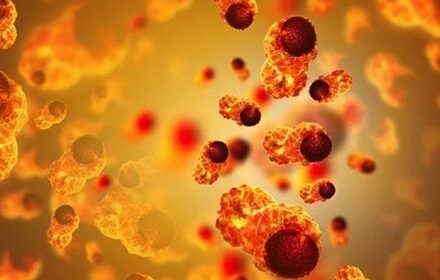Detecting Mutated DNA in Cancer Patients

SRINIDHI VANGALA – Cells, the basic unit of the human body, are made mainly of molecules known as proteins. Cells create proteins from building blocks called amino acids based on blueprints found in their genomic DNA. When these genes become damaged, the cells produce the wrong amino acids to create proteins. This is known as a missense mutation. Missense mutations can cause a person’s cells to grow without the standard control mechanisms and become cancerous tumors.
Currently, doctors extract microscopic tissue samples from patients diagnosed with cancer to learn about their specific tumor type directly from the DNA. Tumors have unique gene sequences, and knowing them helps determine the best treatment. These procedures can often be invasive and painful. There have been many attempts in the past to replace them with blood tests, but these endeavors have failed since tumor cells don’t release enough DNA into the bloodstream to be detected in a blood test. Recently, however, the St. Petersburg City Cancer Center in Russia conducted a study that may bring scientists one step closer to finding a way to detect mutated DNA in the blood of cancer patients. Head researcher Dr. Ekaterina Kuligina and her colleagues hypothesized that subjecting rectal cancer patients to standard radiation therapy could increase cancer cell DNA in their blood to reach detectable levels. The technique would allow doctors to diagnose cancer and individually tailor treatments using blood samples, accurately and non-intrusively.
The research team predicted that giving standard radiation treatments would work by forcing cancer cells to release their DNA, called “ctDNA,” when dying from radiation exposure. Because ctDNA testing lacked sensitivity, previous work had only found minimal uses for the molecule, such as examining emerging tumor mutations responsible for drug resistance. The innovation in this study involved finding a way to increase ctDNA to detectable levels, so it could be used to determine the potential effectiveness of various treatments and the degree to which cancer relapsed.
These results have considerable significance for the future of cancer research. The medical field now has evidence that blood sampling might be able to replace tissue extraction as a way to give doctors the data they need to target each patient’s unique cancer.
The use of radiation therapy to damage cancerous growths in patients can still pose a danger if care isn’t taken to avoid irradiating nearby veins or arteries. These concerns, however, are outweighed by the benefits that blood testing can provide in terms of reduced intrusiveness and increased accuracy. Some future uses could be identifying the procedures appropriate for patients’ tumors, assessing how well a given treatment plan is working, and observing how severely a patient’s cancer has returned.
Copy Editor: Akshay Nair
Photography Source: https://www.medicinenet.com/cancer/article.htm
